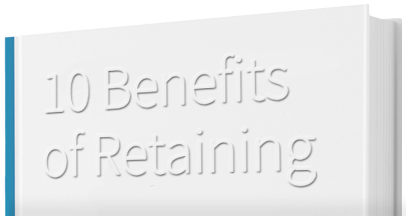Profiling the Association Chief Staff Executive
Key to success in searching for anything is knowing precisely what it is for which you are looking. This is never truer than in an executive search for an association Chief Staff Executive (CSE), especially since such searches invariably involve a search committee. What is of particular note with such committees is that committee members are likely to have different views as to the type executive needed to run the organization. In fact, it is not uncommon for an association’s members to be chosen to serve on a search committee because of the different views, interests and orientations they bring to it.
It is for this reason that every CSE search we do at JDG Associates begins with the development of a CSE profile. The profile is initially developed after a review of the association’s publications, budget, reports of recent board meetings, and strategic plans. It further includes on-site interviews of the association’s senior staff and in-depth interviews with each member of the search committee. In effect, the profile begins with the association and where its leadership wants it to be in three years, and then focuses on the type person needed to take it there.
The profile is different from a position description – which is also reviewed during the course of developing the profile-in that a position description focuses on the duties and responsibilities of the CSE, generally in a very static, even legalistic, manner. The CSE profile, on the other hand, focuses first on the association, why its members join and support it, and where they want it to be in the future. In addition to assisting members of the search committee to focus on the type executive needed, the profile also serves to ensure that JDG consultants assigned to the search have a thorough understanding of the organization, its culture, the world in which it operates and the personality of its membership.
One of the first things we focus on in a profile is whether the association is issue-driven or service-driven. Few associations are exclusively one or the other, and most require capabilities in each area. It becomes a matter of emphasis. An issues-driven association will require an executive with strong political skills, someone who can read a membership’s needs, be able to understand the outside forces that affect the association and then make good judgments of what is possible and how best to get it. Consensus development experience can be particularly important here. Service-driven associations generally require executives with strong marketing instincts, someone with success and a high comfort level in looking for new ways to provide value to the membership and, at the same time, able to develop programs to deliver them.
Both issue- and services-driven association require strong management skills and experience. For this, there can be no substitute.
Determining whether the membership sees the organization as member-driven or staff-driven is also key to developing an effective profile. While in the final analysis all associations are member-driven, our discussions with committee members and staff on their perspective helps to determine whether the association needs a CSE whose strength is in management or leadership. Executives with strong leadership qualities tend to be more effective in staff- driven associations, while those whose strengths are in management are likely to be more successful in member-driven associations. (NB The manager/leader needs of an association change over time as the circumstances of an industry or profession evolve and the membership of the board changes. This is why we direct the focus of the committee on three years into the future, typically the turnover cycle for board leadership.)
In our discussions with the search committee members, we focus on their views of the three most important things the membership receives from the association. In these discussions, we begin with what these were three years ago, what they are now and what they are likely to be three years from now. It is interesting to note that with a committee of six or so members, we often get as many as eight “three most important things.” Helping the committee members prioritize these can be particularly useful in focusing their thoughts on the type executive needed. We are also careful to get committee members views on the role of the CSE in meeting each of these needs.
Other issues covered in the profile include whether the CSE is expected to serve as the spokesperson for the association, the importance of being familiar with the industry or the profession, whether there are any financial hurdles that will have to be cleared in the coming months, and how the committee members regard the quality and skill level of the staff. This last item can be very important in the search; it will directly affect the skill set the new CSE will have to arrive with to serve effectively, or will have to hire soon after coming on board.
Developing a CSE profile prior to the actual search for candidates is in everyone’s interest. For members of the committee, it provides an opportunity early in the search to develop a consensus on the type executive needed, or at least come to an understanding and appreciation of their differences. For the association’s staff, they know that their views will be included in the discussion and that their skills and capabilities will be reflected in the decision making process. For potential candidates, a clear understanding on the part of the search consultant and the committee of the type executive needed to serve ensures that only those candidates with the qualities and skills needed will be approached.



